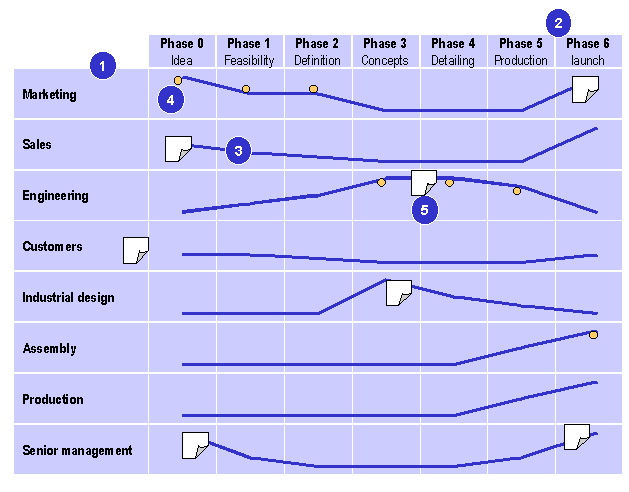Who - when map
This type of analysis was used by Rover in the 1980s. They used a simple mapping tool to chart who in the organisation is involved during each phase or stage of product development. Although this is a simple process, it can be an enlightening way of highlighting weaknesses in cross-functional teamwork and for identifying opportunities for improvements.
The mapping exercise should bring together personnel from across the business who are impacted by or have an influence upon product development. In addition, consideration should be given to external members of the design team - suppliers, customers, industrial designers or other specialists. Having completed the map, it is likely that opportunities for improvement will be self-evident. If not, ask some simple questions, for example:
- Are the right people involved early in the process?
- How are customers integrated?
- Is there sufficient or too much senior management involvement?
The overall map should include several key elements (see illustration):
- The different 'functions' or people who can be involved
- The major phases of the product development process as used in your company
- An estimation of the level of involvement of each stakeholder, from low to high
- An indication of who takes the lead role at each phase
- The chart can also be used to map other issues, such as the usage of structured tools, possible improvements and typical problems - using post-it ™ notes

Figure 1: Who is involved when?
For more information, please contact:
T: +44 1223 764830









